Lifestyle
The Truth About Soy and the Environment
10min read
We've trawled the research to find the truth about soy and we think it’s more complicated than the common arguments against this little legume would have us believe. Is soy single-handedly responsible for destroying the environment? We think not.
Having explored the health-based arguments for and against including soy in our diets, our thoughts turned to the environmental impact of growing soybeans. Soy is produced on an immense global scale and undeniably does have a significant impact on the environment. But do the effects of this create a good argument against: a) eating a plant-based diet in general, or b) eating soy products?
Soy production
In 2017, 123.6 million hectares of land was used to grow 352.6 million tonnes of soybeans. That’s a lot of land — an area bigger than South Africa — and a lot of soybeans. Whilst we can't deny the impact this has on the environment, this isn’t necessarily a valid argument against the sustainability of eating soy. Let us explain why...
Soybeans are processed in different ways for different — edible, industrial and medical — reasons. Whole beans are used to make the products we widely associate with human consumption, such as soy milk, tofu and tempeh. Alternatively, the beans are crushed to make oils and protein products. And the latter is mainly used as animal feed. In fact, the majority of soy grown worldwide is used to feed livestock for human consumption.
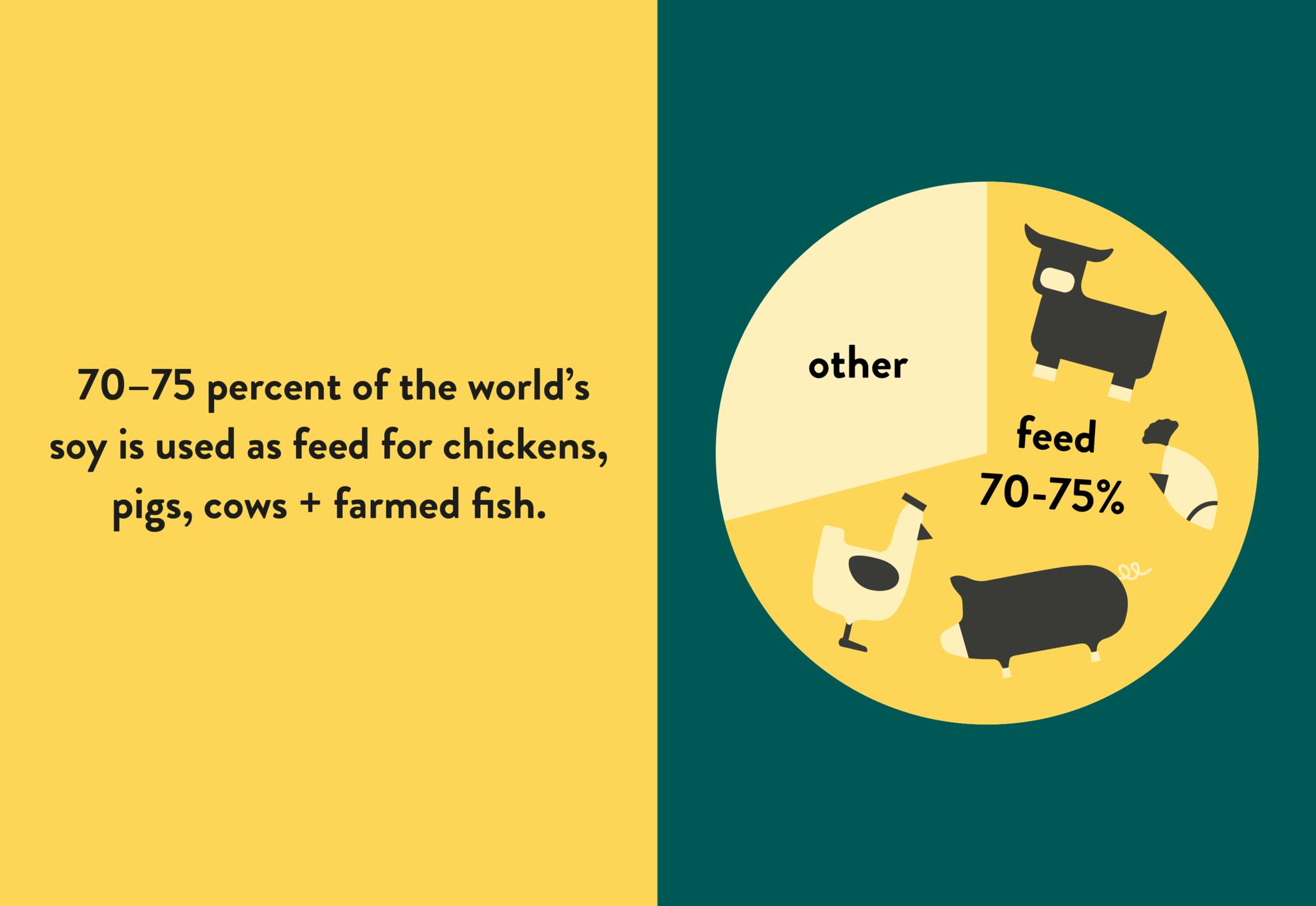
70–75% of the world’s soy is used as feed for chickens, pigs, cows and farmed fish. In 2016, 18% was being used as biodiesel (mainly by the EU) and the remainder — 7 and 12% — was being used for everything else, including human consumption. Hence, eating soy products isn’t the most significant driver of current soy production, demand for meat products is too.
Soybeans are a highly lucrative business but the majority of the world’s supply is grown in three countries: the USA (35%), Brazil (29%) and Argentina (18%).
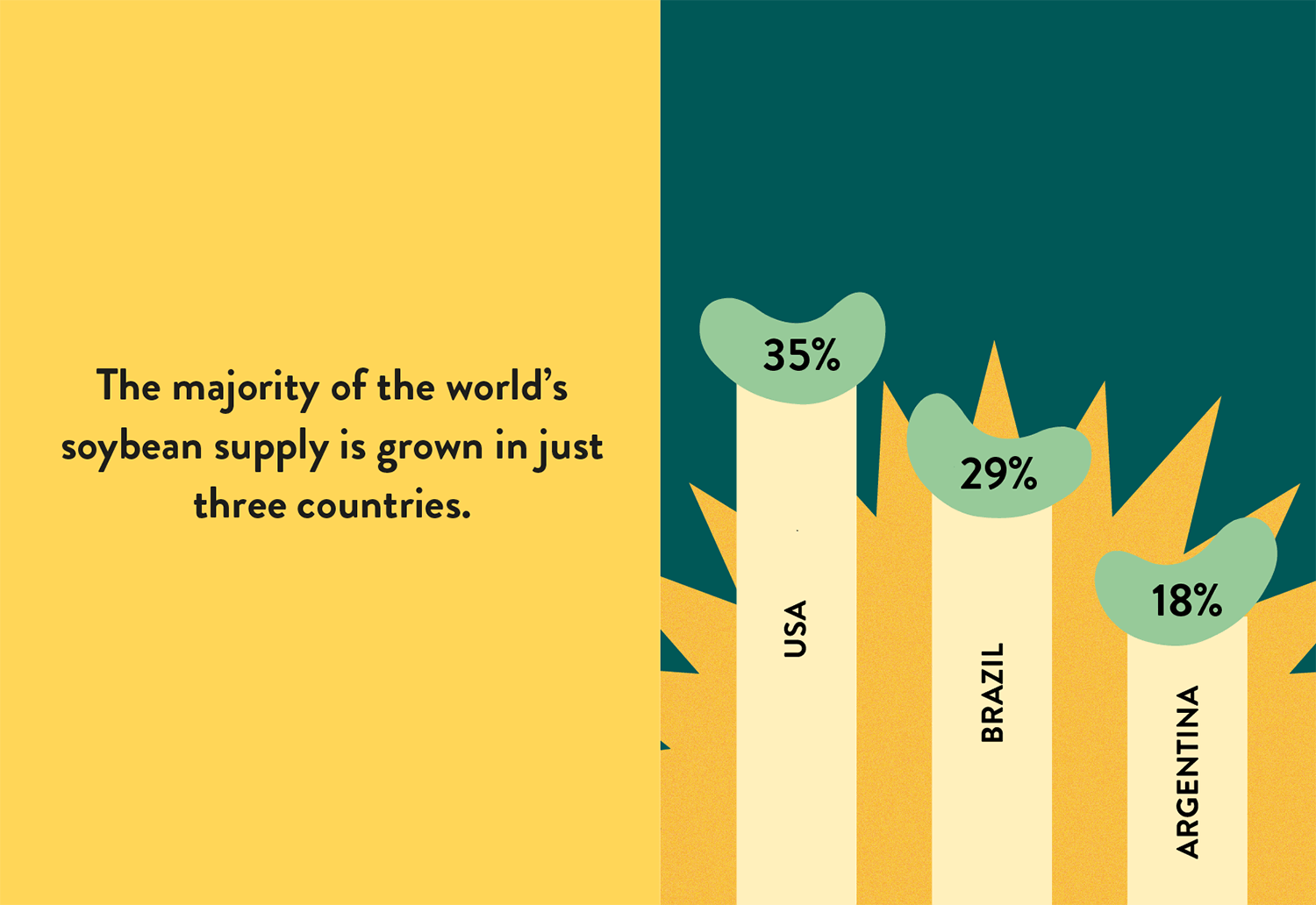
In the US soy is mostly grown on arable farmland and, due to its late harvesting, it's grown in rotation with other crops, such as corn. There are benefits associated with the plant itself, too: it adds nitrogen back to the soil for the next crop to utilise; soy yields rely on minimal fertilisers and pesticides, and soy actually supports farmers in managing a common pest called blackgrass.
It's in the developing world — South America particularly — where the biggest environmental issues arise, and not because of the plant itself. Soybeans are of great economic value but come at a huge environmental cost when biodiverse land is cleared to grow it.
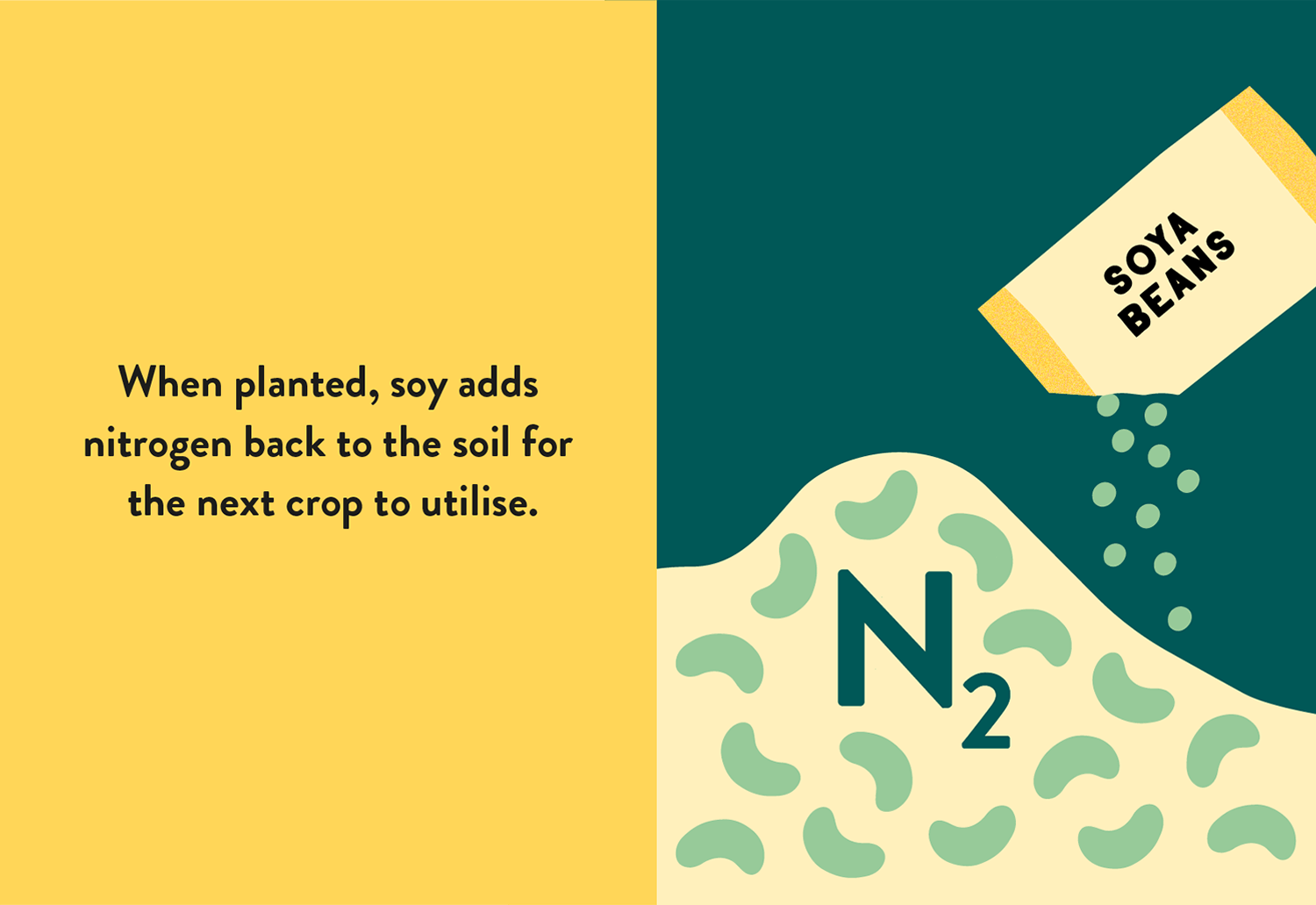
The environmental effects of soy production
Let's now delve deeper into how our current soybean situation affects the environment both positively and negatively.
Deforestation
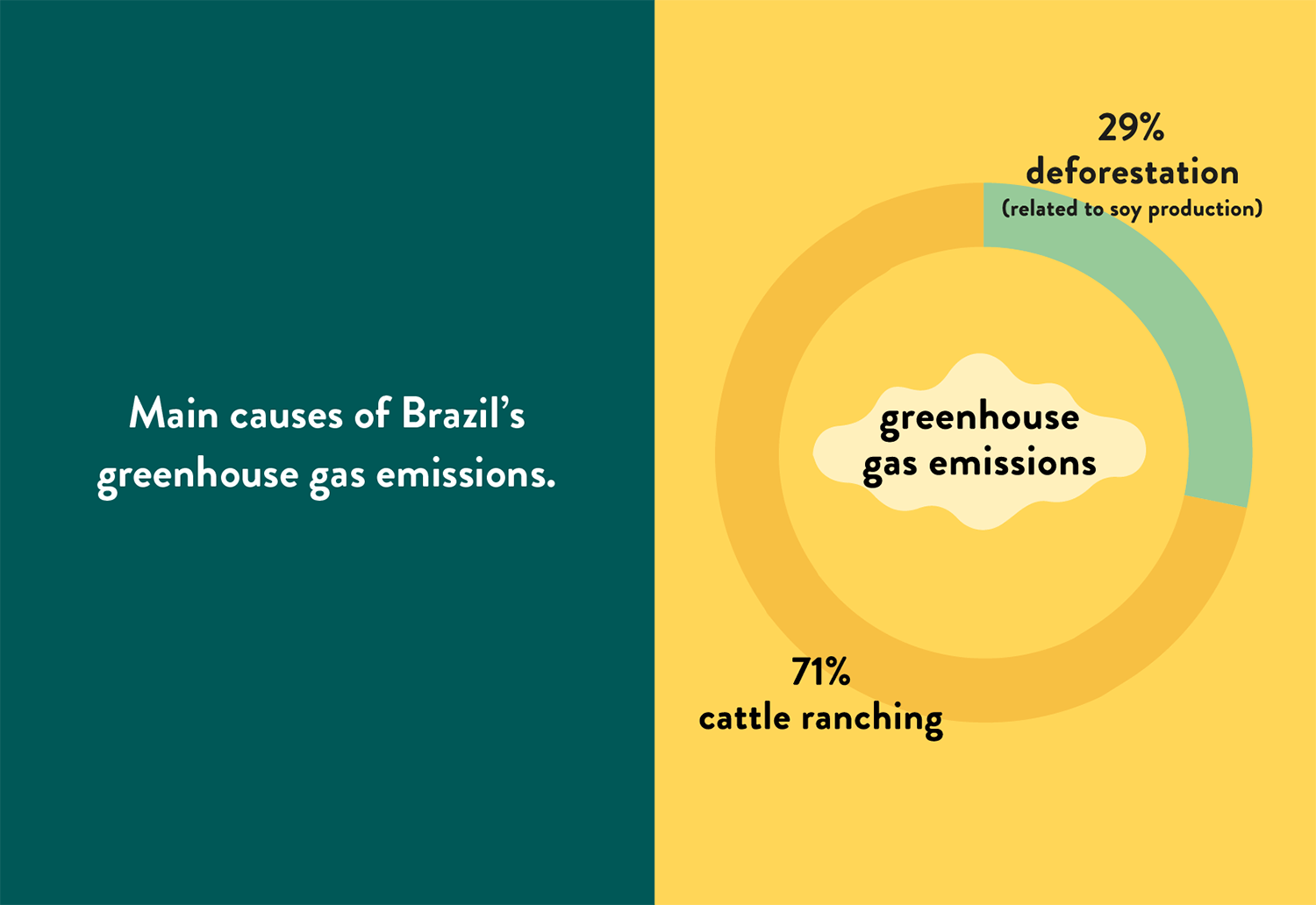
There's a strong link between the increase in soy production and deforestation in South America. Cropland expansion, mainly for soy, was the main driver of deforestation between 2001 and 2004, accounting for 17% of total forest loss in that time.
In addition, when considering greenhouse gas emissions relating specifically to deforestation, 29% of Brazil's emissions are due to soy production, while the other 71% is down to cattle ranching.
When considering deforestation in Brazil it's important to look at the whole picture, especially how the cropland used to grow soy interacts with other land uses and what the beans themselves are used for. Ultimately, the biggest problems lie with the interaction between soybeans and animal agriculture.
Carbon Footprint
Since the vast majority of soy consumed — directly or indirectly — in the UK is imported, carbon footprint from transportation also needs to be considered.
Eating tofu once or twice a week contributes 12kg to your annual greenhouse gas emissions (equivalent to heating the average UK home for 2 days or driving 32 miles). The same amount of dairy equates to four times as much, and beef? A whopping 604kg (driving 1,542 miles or heating your home for 95 days!).
Soybeans are generally transported internationally by ocean freighting or overland, using trucks. This is good news for the environment as air freighting would be a big issue. One kilo of produce moved by air-freight has a hundred times the climate impact compared with produce moved by sea-freight. This is because it takes a lot of energy to keep a plane in the air and engine emissions do more damage at higher altitudes.
Biodiversity
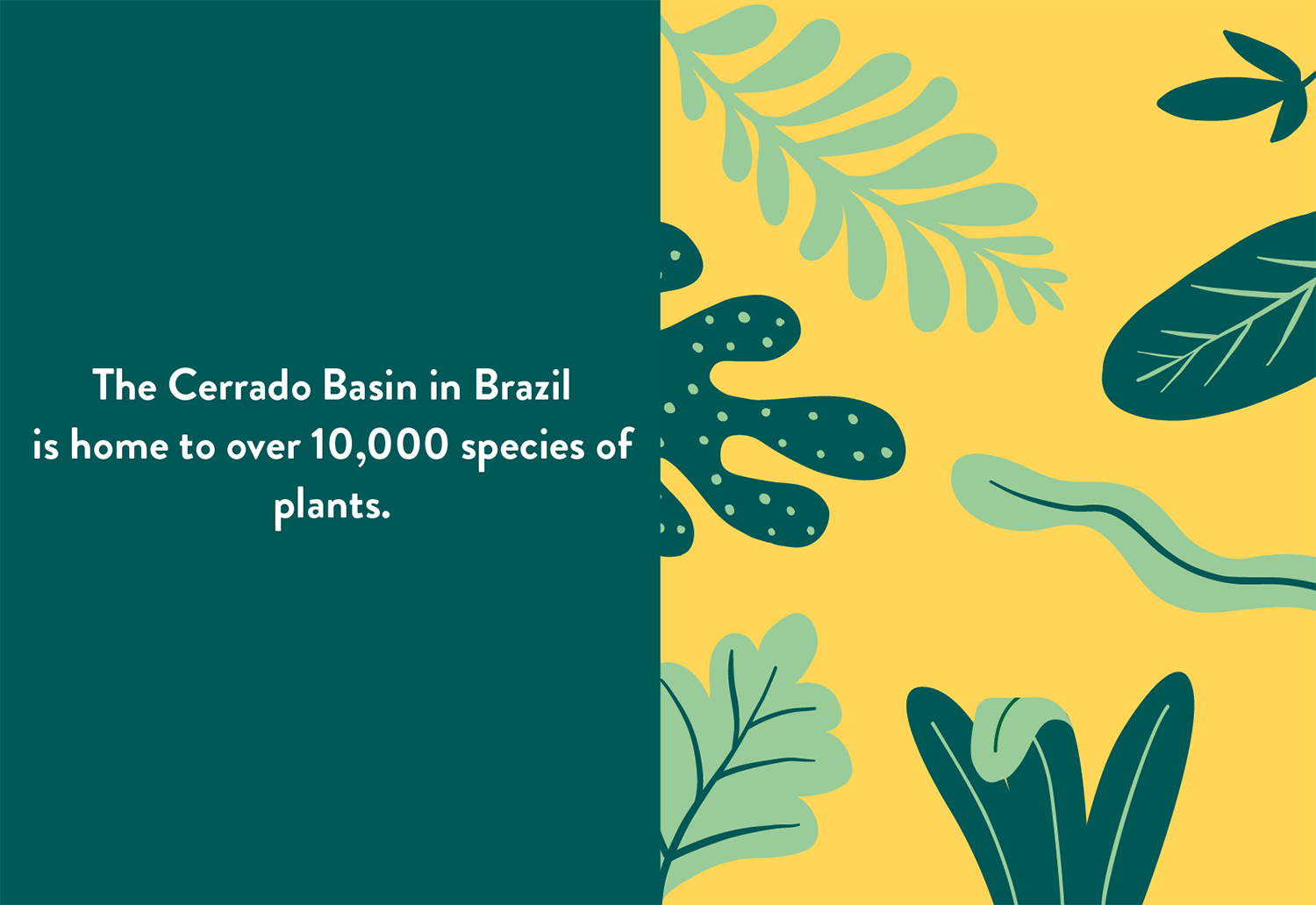
The impact of clearing land — whether to grow feed crops for livestock or to graze cattle directly — has had a negative impact on wild animals and plants too.
The Cerrado Basin in Brazil — where much of the deforestation occurs — is home to around 5% of all species on Earth, including over 10,000 species of plants, almost half of which are unique to the area. Deforestation in biodiverse areas like this affects both the resource and water security of the animals and plants living there, as well as the stability of global food supplies.
How can we decrease the impacts of soy?
Reduce the demand for soy crop
Frustratingly, the demand for soybeans continues to grow in line with our global demand for animal products, originally in the developed world and now with the rising middle classes in China and India in particular.
To meet this growing demand, ever more land is needed. Soy is an annual crop and one that's largely unresponsive to fertilisers. Therefore, to increase the yield more plants need to be grown and that requires more space.
The average European consumes approximately 61kg of soy per year, and not by eating tofu: this consumption is largely indirect, through meat, fish, milk and eggs. In 2010, Britain needed an area the size of Yorkshire to produce enough soy to make enough animal feed. If the global demand for animal products continues to grow as expected, it's estimated that soy production will need to increase by nearly 80%. The implications of this are simply catastrophic for the environment.
Reduce the amount of land needed to grow soy
One potential solution to reduce the amount of land needed to grow more soy, is to grow genetically modified varieties of soy that produce higher yields of crop per square foot. But this comes with a whole new set of questions and concerns.
Controversies around genetic modification are still vast. Regardless of our opinions on GMOs, UK laws mean that — for us at least — GM soybeans aren't currently the answer.
In conclusion
Sadly, it's hard to deny the detrimental impact of soy farming on the environment in terms of deforestation and biodiversity. However, soy farming isn't single handedly to blame when we look at the interplay between crops and livestock – specifically the proportion of soy that's used to feed animals.
It's actually our over-reliance on animal products — and the global likelihood of this continuing to increase rather than decrease — that's causing the most damage to the planet, in terms of the issues above as well as soil erosion, nutrient depletion and water usage.
Therefore, we believe that the environmental impact of soy is most definitely not a valid argument against a plant-based diet. We also don’t believe it's a good reason not to eat that sweet and sour tofu. By replacing meat with a plant-based alternative (even one made from soy) you are moving the needle in a more environmentally efficient and sustainable direction.
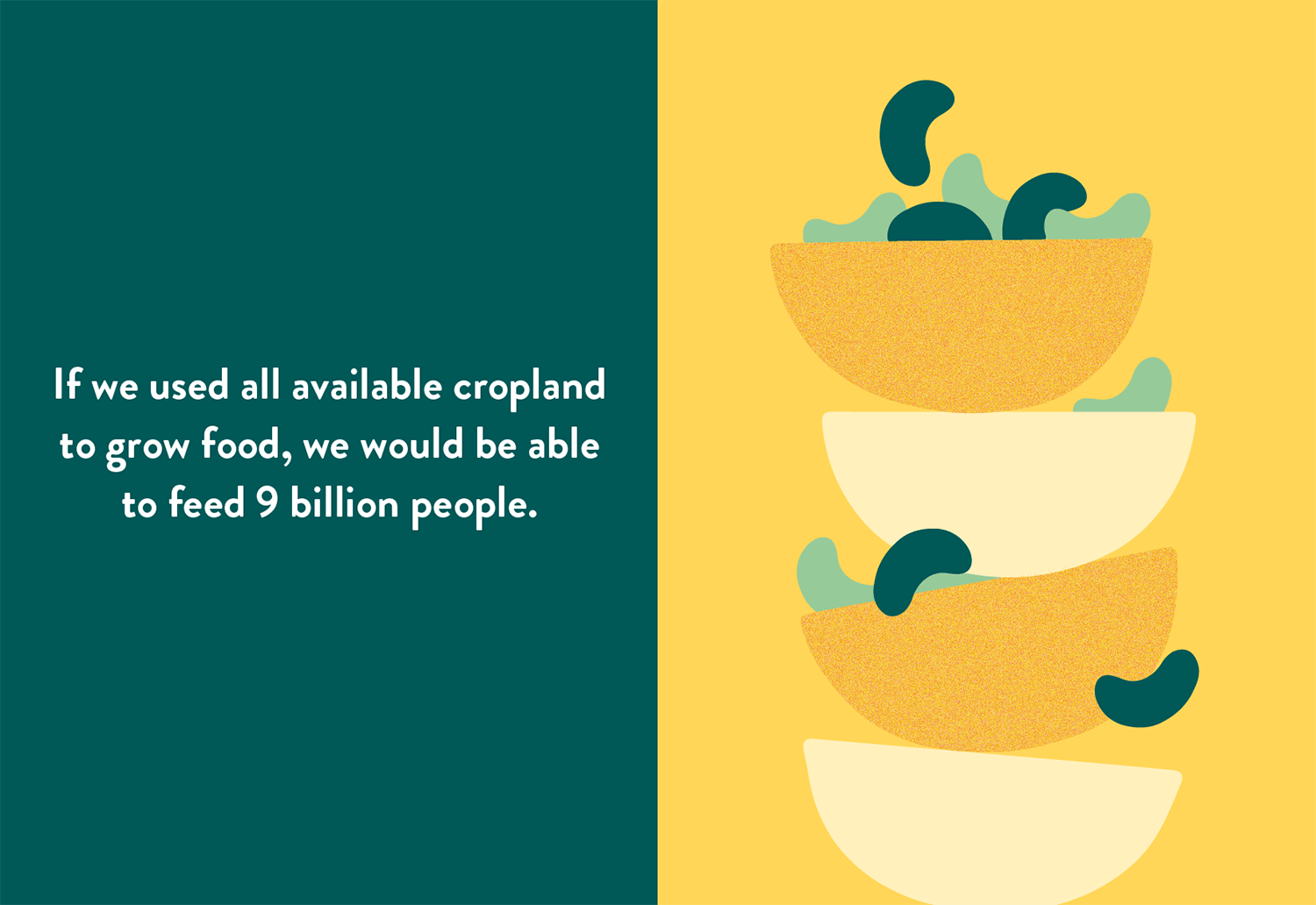
allplants’ commitment to the environment
As a B-Corp, every choice we make is made consciously with the good of people and the planet in mind. This includes where we source our soy. Balancing demand with what’s best is quite a challenge. We have chosen a GMO-free policy and ensure that none of our products are air-freighted.
Feel free to check out our environmental policies if you’re interested.
By Munjeeta Sohal
MJ is a freelance writer, avid reader and habitual ruminator (and user of fancy words). She couldn’t live without books and her cats. On her days off, you can find her cycling up and down the Lea Valley, searching for a great vegan recipe to cook, or, well, reading her book with her cats.
Let us take care of dinner
We help to make eating more plants easy and delicious. Fancy letting us take care of dinner? Check out our delicious meals here.
Shop now
